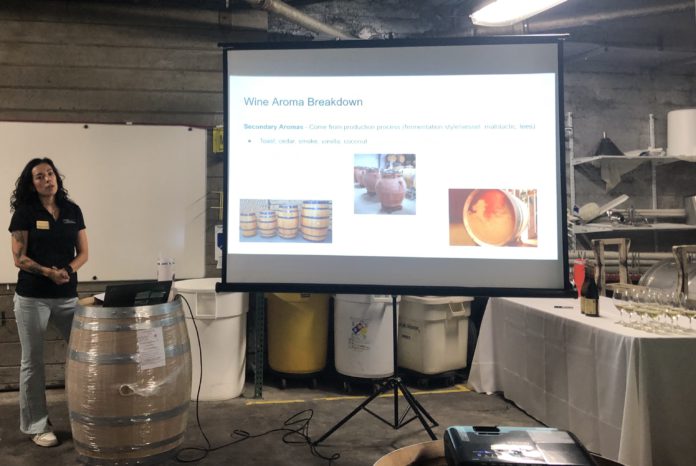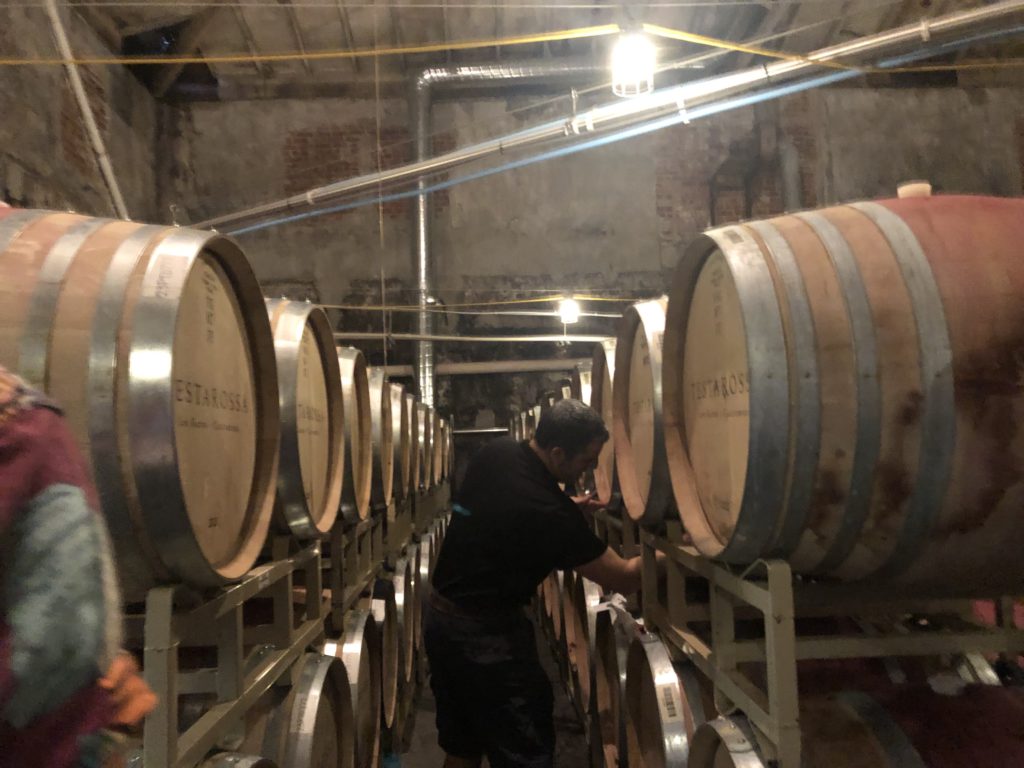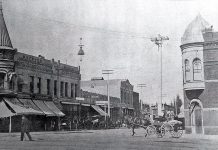
Winemaker Bill Brosseau has learned to read the barrels like a fortune teller reads tea leaves.
The Testarossa Winery vineyard manager routinely tastes through every barrel in the cellar, learning their personalities. Each one can impart something significant to a wine, and for the last 23 years, he’s learned the nuances of each cooperage.
He looks at type of wood, how long it’s air-dried, how heavily the barrels are toasted and the extent to which these factors will transfer into the grapes. He does this for each vineyard the company works with, considering the different clones (variants) of pinot noir and chardonnay he sources from each. Consequently, Testarossa’s cellar is a rather complicated Rubix cube of possibility: only there is no one “right” answer. That’s because wine is not just science. It is also art—with each bottle more like a painting than a solved quadratic equation.
In the barrel tasting sessions Testarossa held this past Sunday, primarily for club members, attendees learned plenty about barrel technology, how aromas and flavors can be infused into wine. The event featured three stations.
First, we were welcomed to a sensory workshop led by Holly Kimura-Carlin and Katie Abelson from the Testarossa Production team. We learned that primary aromas come from the grape varietal, terroir—where the grapes were grown—and the winemaking style. These form the core of the wine as brought into the winery.

Secondary aromas emerge during production. They’re introduced by the kind of vessel in which the wine is fermented (such as stainless steel, amphora or barrel) and whether it went through an additional process such as “malolactic fermentation” or “lees stirring.” Malolactic, or malo, as it’s referred to in wine geek parlance, means the process by which the apple-like malic acid is converted to lactic acid. This tends to impart a creamier texture (and sometimes a downright smack of butter). Lees stirring is evident when the wine has a yeasty aroma, often like bread dough or a fresh baguette. Tertiary aromas come with time, as the wine ages in the barrel—and then in the bottle.
The fun ramped-up with a challenge. We were instructed to set our noses loose to attempt to match scents in little chrome vials with the graphic icons on our worksheets. There was a pot of honey with a piece of honeycomb, a stack of butter sticks, slices of green apple, a bunch of cherries, a cute little trio of mushrooms, a pile of butterscotch nibs, a juniper branch and some sliced lemons. Most scents were extremely straightforward, but at least one other student in the class agreed with me that the cherry and caramel (butterscotch) examples were swapped.
We also learned that scents from barrels depend on the “toast” levels (vanilla, toffee and coconut are associated with lighter-to-medium toast, and coffee, smoke, clove and butterscotch indicative of a heavier toast).

Then it was on to the deep, dark cellar to taste some 2023 pinot noir with Brosseau. Expertly thiefing the first sample from a second-use barrel, he threw down the gauntlet and asked if we could identify the vineyard or the clone of pinot noir in our glasses. And that was truly a tricky one. From the Fogstone Vineyard at the northern end of the Santa Lucia Highlands (SLH), we were trying a new clone of pinot noir, called Clone 122, which traces its heritage to exclusive estates in Burgundy. We found it to be somewhat earthy, with a nice truffle undertone. It had a nice peppery edge, bordering on clove.
The next sample was Pommard 4 from the La Rinconada Vineyard, in Sta. Rita Hills. It was poured from a new barrel, which imparted a definitive hit of coffee on the finish. Aromas of cherry and earth introduced the wine, which was mouth-coating and engaging. And there was the definitive streak of tarragon, which is often associated with products from this region.
We then went back to Fogstone Vineyard in the SLH to sample Clone 777, known for its dark blackberry fruit. This was so smooth and lovely, like blackberry pie. Turned it was a barrel that had been lightly toasted using hot porcelain tile, rather than with the direct flame coopers usually employ. It’s a smokeless way to add complexity to a barrel.
For our fourth sample, we tried the same clone in a barrel toasted via traditional methods, which delivered depth and char.
The final barrel lesson involved a comparison of the same clone, 777, from the Tondre Vineyard (also from the SLH), resting in three different barrel sizes: traditional Burgundy (228 liter), puncheon (475 liter) and a hogshead (300 liter). The wine from the smallest barrel was the most concentrated, with candied strawberry, bright lemon, orange rind and intense acid. Everything about it had sharp elbows. As we tried the progressively larger barrel sizes, we found the wine more aired-out, relaxed, matured and approachable. It was like time had accelerated the aging process—just a smidgen—but with a softer touch.
As Brosseau explained, every barrel has its place. And, with 23 harvests behind him, time is on his side.









